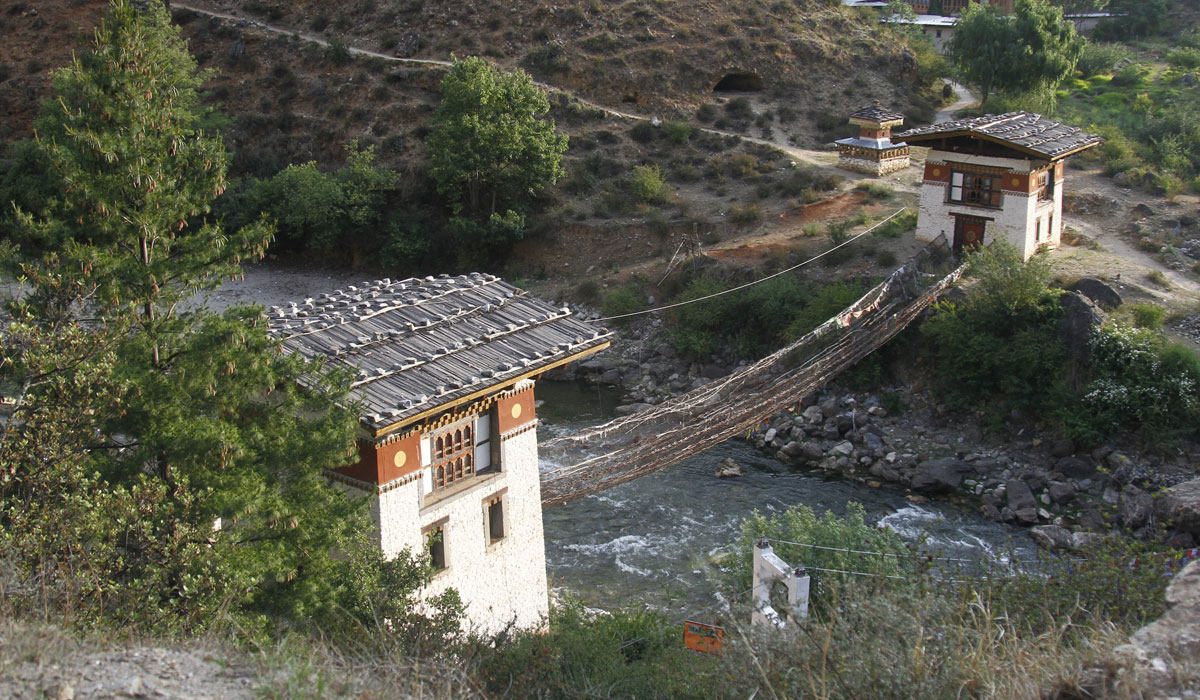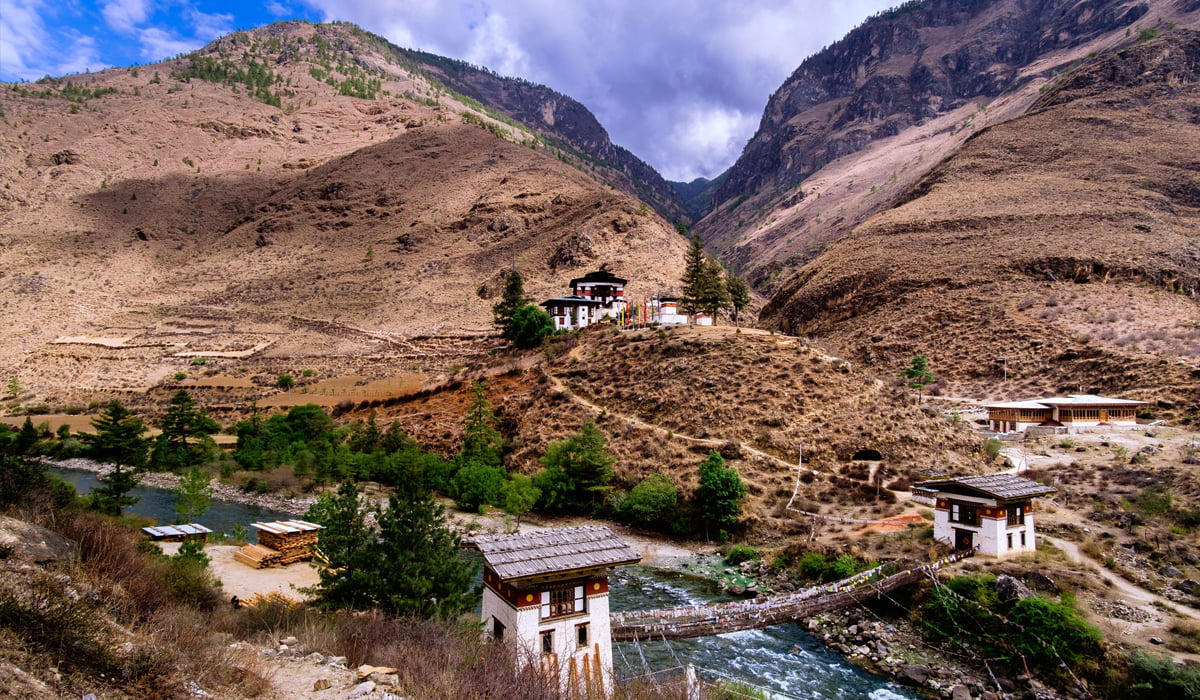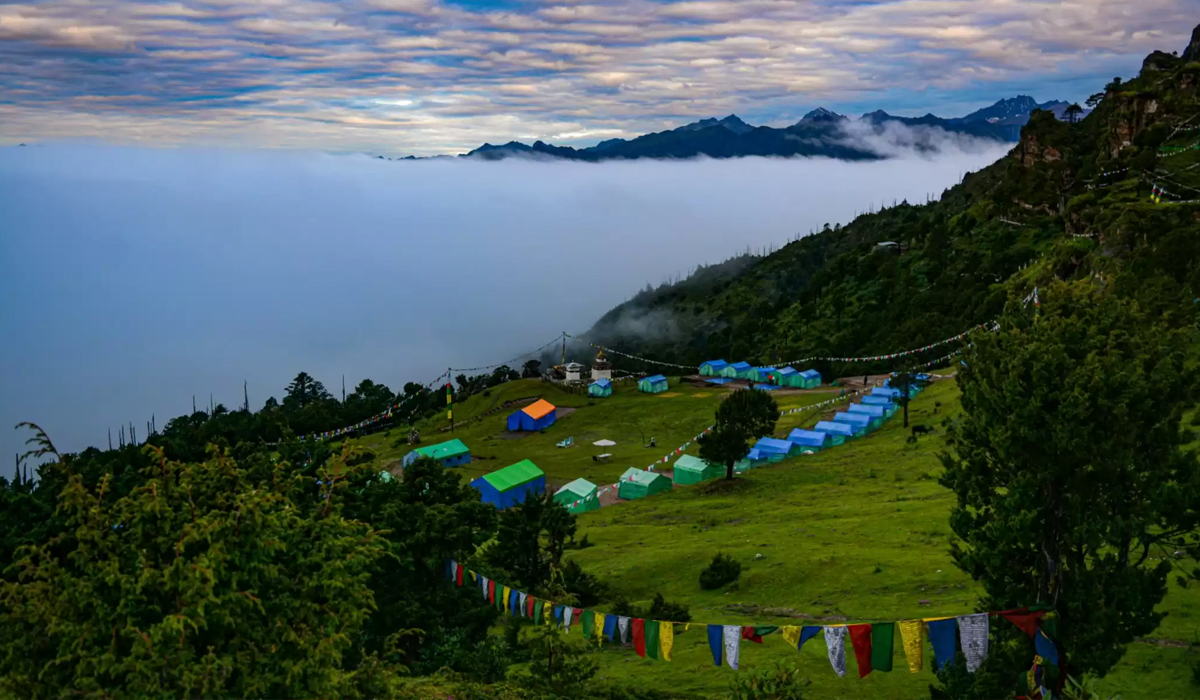


Tachogang Lhakhang: A Sacred Temple of the Iron Bridge
Tachogang Lhakhang, also known as the Temple of the Iron Bridge, is a significant and picturesque Buddhist temple located in the Paro Valley of Bhutan. Renowned for its historical importance and stunning views, it is a must-visit site for both pilgrims and tourists alike.
Historical Background
Tachogang Lhakhang was built in the 15th century by the revered saint Thangtong Gyalpo, a key figure in Bhutanese history credited with constructing numerous iron bridges throughout the country. According to local legend, Thangtong Gyalpo founded the temple to honor the deity Mahakala and to provide a spiritual sanctuary for travelers crossing the river below. The temple is closely linked to the history of Bhutanese architecture and the development of iron bridge construction, reflecting the ingenuity of its founder.
Architectural Highlights
The temple features a blend of traditional Bhutanese architectural styles, characterized by its sturdy stone construction, intricate woodwork, and colorful prayer flags. The temple’s most notable feature is the iron bridge that spans the Paro Chhu (river) below, originally built by Thangtong Gyalpo. This bridge serves as a vital link for local communities, allowing access to the temple and surrounding areas.
Inside the temple, visitors can find vibrant murals and statues depicting various Buddhist deities, along with offerings and prayer wheels that enhance the spiritual atmosphere. The serene ambiance of Tachogang Lhakhang invites reflection and meditation.
Spiritual Significance
Tachogang Lhakhang is a sacred site for locals and pilgrims, believed to house powerful spiritual energies. The temple serves as a venue for various religious ceremonies and rituals, drawing monks and devotees who seek blessings and spiritual guidance. Its association with Thangtong Gyalpo, a revered saint, adds to its spiritual importance within Bhutanese Buddhism.
Scenic Beauty
Situated on a hillside overlooking the Paro Valley, Tachogang Lhakhang offers breathtaking views of the surrounding landscapes, including lush green hills and the winding river below. The serene setting enhances the spiritual experience and provides ample opportunities for photography and exploration of nature.
Accessibility
Tachogang Lhakhang is located approximately 14 kilometers from Paro town. Visitors can reach the temple by road, followed by a short hike across the iron bridge, which adds a sense of adventure to the journey. The hike offers picturesque views of the valley and is suitable for individuals of varying fitness levels.
Festivals and Rituals
The temple hosts various religious festivals throughout the year, drawing devotees from the surrounding areas. These celebrations often include traditional dances, rituals, and offerings, showcasing the vibrant cultural heritage of Bhutan.
Preservation and Community Roles
Tachogang Lhakhang is actively maintained by local communities, who recognize its historical and cultural significance. Efforts to preserve the temple ensure that it remains a focal point for spiritual practice and community gatherings. The temple also plays a role in educating visitors about Bhutan’s rich Buddhist heritage and traditions.
Paro - Places to visit

Paro Taa Dzong, a historic fortress, houses the National Museum of Bhutan, showcasing the country’s rich cultural heritage and art.

Paro Rinpung Dzong, a stunning fortress-monastery, features exquisite Bhutanese architecture and serves as an administrative center and religious site.

Kyichu Lhakhang, one of Bhutan’s oldest temples, symbolizes Buddhism’s introduction, featuring beautiful architecture and serene surroundings in Paro Valley.

Drukgyal Dzong, a historic fortress in Paro, symbolizes Bhutanese resilience, offering breathtaking mountain views and insights into the nation’s heritage.

Tachogang Lhakhang, located in Paro, is a historic temple known for its stunning architecture and beautiful bridge, symbolizing Bhutanese heritage.

Dungtse Lhakhang, a unique chorten-style temple in Paro, features exquisite murals and offers insights into Bhutanese Buddhism and history.

Taktsang Monastery, or Tiger’s Nest, clings to a cliff in Paro, symbolizing Bhutan’s spirituality and breathtaking natural beauty.

Chelela Pass, the highest road pass in Bhutan, offers stunning views, vibrant flowers, and a scenic route to Paro and Haa.

Chelela Ridge Trek offers breathtaking views of the Himalayas, vibrant flora, and a rich cultural experience in Bhutan’s scenic landscapes.

Bumdrak Trek offers stunning views of the Himalayas, serene monasteries, and unique cultural experiences, making it a memorable adventure in Bhutan.

Dzongdrakha Monastery, perched on a cliff in Paro, features stunning architecture and serene surroundings, offering insights into Bhutanese Buddhism.
